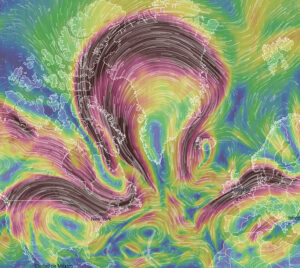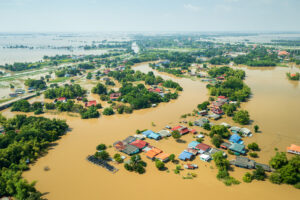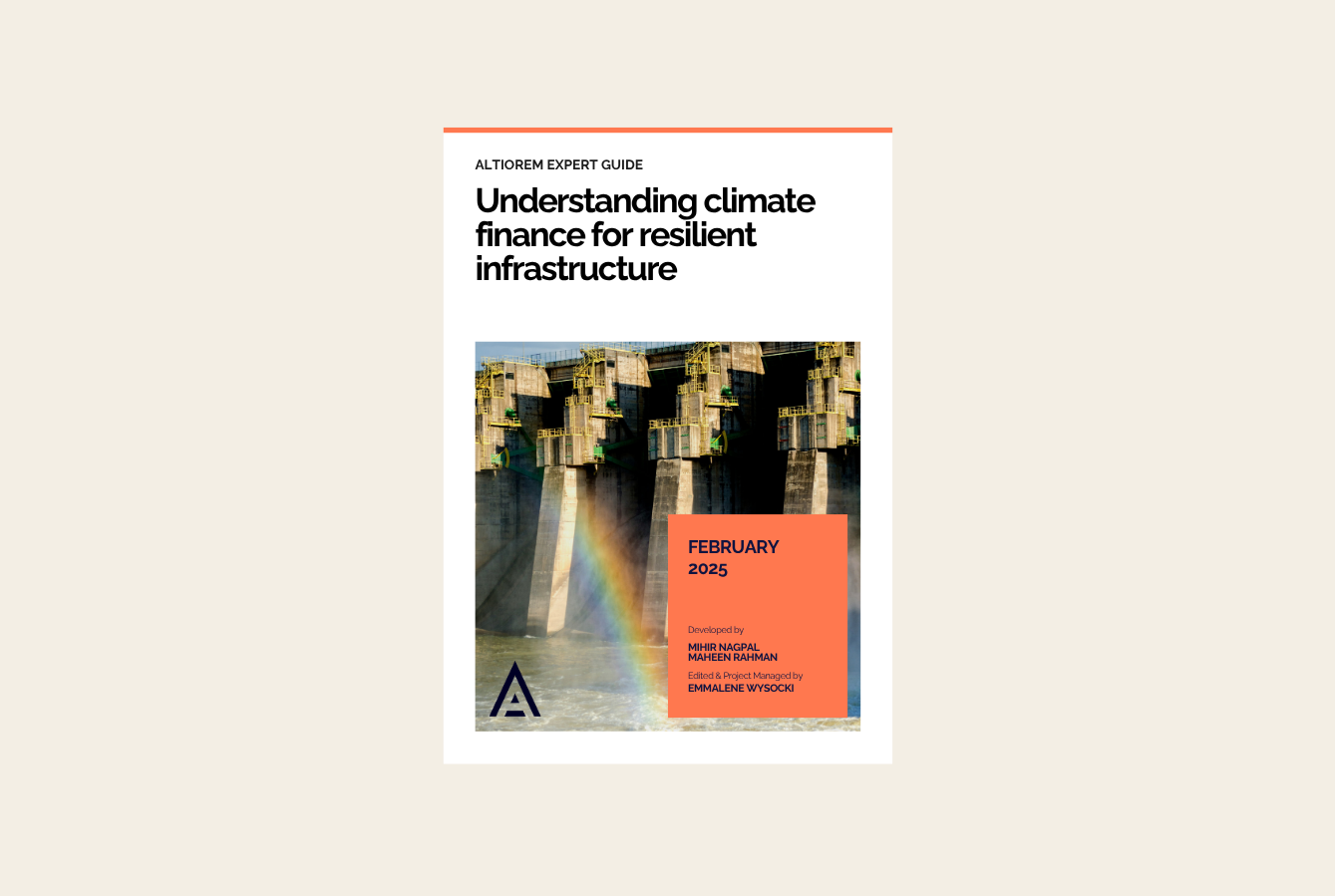
Heat domes and flooding have nearly tripled since the ’50s
This article explores how climate change is amplifying jet stream patterns, driving extreme heat, wildfires, and stalled weather events.
AUTHORS

Disclaimer: This article is republished with permission from the author, Nathi Magubane. The original article was published on University of Pennsylvania’s website and can be found here. Any views expressed in this article are those of the original author and do not necessarily reflect the views of Altiorem.
Image: iStock / Boogich
Key Takeaways
- New research shows that stalled atmospheric events linked to heatwaves, floods, and wildfires—driven by a phenomenon called quasi-resonant amplification (QRA)—have nearly tripled since the 1950s.
- QRAs occur when large planetary waves in the jet stream become amplified and trapped, causing extreme weather to persist over one region for longer periods.
- Today’s climate models struggle to capture QRAs accurately, meaning they may underestimate the likelihood and severity of prolonged extreme weather events.
Over recent years, summers have seemingly seeped into ever-lengthening seasons of climate disruption. Wildfires blaze through vast swaths of forest in the American West and across Canada, releasing smoke that drifts thousands of miles and casts an eerie orange glow over East Coast cities.
The same stubborn atmospheric patterns that feed these infernos also blanket urban centers like Philadelphia in relentless, punishing heat. Heat domes settle over concrete corridors—especially in low-income neighborhoods with limited green space—turning row homes, buses, and sidewalks into sweltering hazards.
Presidential Distinguished Professor in Penn’s Department of Earth and Environmental Science Michael E. Mann, postdoctoral researcher Xueke Li, and other researchers offer fresh insight into the atmospheric mechanics behind these extremes—and troubling evidence that they’re becoming more common.
Published in Proceedings of the National Academy of Sciences , the paper shows that a specific and destructive jet stream behavior, known as quasi-resonant amplification (QRA), is happening more frequently and is tightly linked to human-caused climate change.

Jet stream configuration during the late August 2023 resonance event.
(Image: Courtesy of Xueke Li)
Michael Wehner, a senior scientist at Lawrence Berkeley National Laboratory and co-author on the study, notes that while the thermodynamic effects of climate change—such as increased temperatures—are well understood, “the effects of climate change on the dynamical processes that cause certain types of extreme weather is a more difficult problem. This paper detects an important change in one of these complex aspects of atmospheric motion.”
What is quasi-resonant amplification?
QRA occurs when large, slow-moving planetary waves in the jet stream—a high-altitude air current that guides weather systems—intensify and become stalled, Li explains. This “trapping” effect causes weather such as heat domes or rainstorms to remain over one region. “This resonance increases the waves’ strength and persistence, often leading to extended extreme weather,” Li says
The team previously studied the 2021 Pacific Northwest heat dome, one of the most extreme heat events on record. Their analysis traced that event to QRA dynamics that amplified a planetary wave and dried out regional soils, which in turn fed extreme surface warming.
“This latest study builds on that by providing the first observational evidence that such QRA events are becoming more frequent in a warming climate,” Mann says. “And it’s the first study to demonstrate a historical increase, taking advantage of the more reliable atmospheric ‘reanalysis’ observations that are available today.”
The observed rise in QRA events, Mann notes, isn’t due solely to more powerful waves, but to the rare alignment of two necessary conditions: wave amplitude and wave phase.
“For a QRA event to occur,” he explains, “high-amplitude waves must also be in just the right phase, meaning they are positioned in the atmosphere in a way that allows them to become trapped and resonate. Without that precise alignment, even strongly amplified waves may simply move along and fail to lock into place.”
Li adds that the trend is closely tied to “polar amplification of warming and increased land/ocean thermal contrast,” both of which can be tied to the pattern of human-caused warming.

Quasi-resonant amplification is driving stalled atmospheric events that produce heatwaves, floods, and wildfires.
(Image: thianchai sitthikongsak via Getty Images)
“The burning of fossil fuels has released vast amounts of carbon dioxide and other greenhouse gases into the atmosphere, driving global temperatures higher,” Li says. “But the impact doesn’t stop there. Human-induced warming is also modulating the jet stream and other circulation systems, making extreme weather events more frequent, persistent, and severe.”
How scientists detect resonance and what models are missing
To identify QRA events, scientists look for specific patterns in the jet stream.
Mann and Li, for example, detect planetary wave resonance by examining specific atmospheric conditions that favor the trapping of certain large-scale waves in the jet stream; this creates the potential for those waves to resonate and become amplified. To confirm a resonance event, they use spectral analysis, a technique that breaks down the atmosphere’s wave structure into distinct components, like a song into notes This allows the researchers to isolate the relevant waves—typically those that circle the globe six to eight times—and track their strength and duration over time.
Despite the growing frequency and impact of these events, current climate models don’t fully capture them.
“Part of why this is so significant is that the current-generation climate models do not do a good job in capturing this phenomenon,” Li says. “And this means that the models are likely underestimating the potential for increase in these sorts of damaging and deadly summer weather extremes.”
What ENSO means for resonance
One additional layer of complexity comes from the El Niño–Southern Oscillation (ENSO), a tropical Pacific phenomenon that affects global atmospheric conditions.
“During ENSO events, shifts in heat and convection across the tropical Pacific ripple outward, altering the structure and strength of the jet stream,” Li says.
These changes can create atmospheric conditions that either favor or suppress the trapping and amplification of planetary waves. ENSO acts more like a background conductor, subtly influencing the broader atmospheric state in which planetary wave resonance may occur, explains Li.

Record-breaking temperatures lingered over the Northwest during a historic heatwave in June, 2021 in Vancouver, Washington.
(Image: Nathan Howard via AP Images)
While the relationship is complex and not always immediate, researchers have found that the most active QRA years often follow a peak of major El Niño events, suggesting a delayed but influential connection that scientists are still working to fully understand.
To better capture that nuance, Mann and Li say future work will focus on next-generation, higher-resolution models.
“By testing these advanced models,” adds Li, “we are also better positioned to develop a more comprehensive mechanistic understanding of how ENSO interacts with QRA—an important and still evolving area of research.”
Michae E. Mann is the Vice Provost for Climate Science, Policy, and Action, Presidential Distinguished Professor in the Department of Earth and Environmental Science in the School of Arts & Sciences at the University of Pennsylvania and the director of the Penn Center for Science, Sustainability, and the Media. He holds a secondary appointment in the Annenberg School for Communication.
Xueke Li is a postdoctoral researcher in the Mann Research Group at Penn.
Michael F. Wehner is a senior staff scientist at Lawrence Berkeley National Laboratory.
Shannon Christiansen of the University of Pennsylvania is also an author on this study.
This work was supported by the University of Pennsylvania’s School of Arts & Sciences and the Department of Energy (contract no. DE340AC02-05CH11231.)








